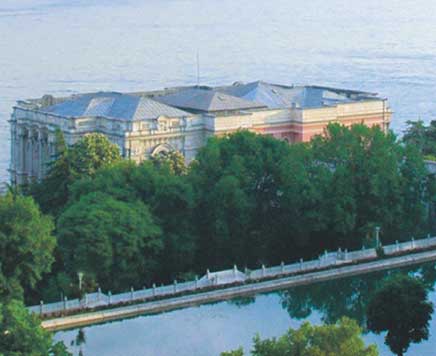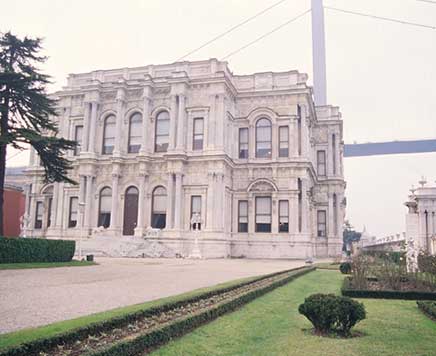- Rixos Tersane Istanbul
- PrimeQM MICE
- Divan İstanbul
- Tüyap Palas
- ALLACTIVITIES
- Asitane Restaurant
- Avantgarde Collection Levent
- Ayasofya Hürrem Sultan Hamamı
- Beylerbeyi Palace
- Cemile Sultan Korusu
- Conrad İstanbul
- Consys Conf. Systems And Audio/Visual Service
- Crowne Plaza İstanbul-Asia
- CVK Park Bosphorus
- D Event
- Dekon Group
- Detay Tasarım Fair & Congress
- Dolmabahçe Palace
- Dorak MICE
- ETSMICE
- Figur
- Grand Cevahir Hotel
- Grand Hyatt İstanbul
- Haliç Congress Center
- Hilton İstanbul Bosphorus
- Hilton İstanbul Maslak
- Hyatt Regency İstanbul Ataköy
- Istanbul Culture And Arts Products Trade Co.
- İstanbul Expo Center (IFM)
- TÜYAP MICE AND MORE
- İstanbul Congress Center (ICC)
- Istanbul Marriott Hotel Şişli
- K2 Conference and Event Management
- Karavan Türkiye
- Konak Hotel İstanbul
- MCI Türkiye
- Mercure İstanbul Taksim Hotel
- Mövenpick Hotel Istanbul Golden Horn
- Portaxe
- Radisson Blu Hotel İstanbul
- Sedef Fair&Congress Services
- Serenas Group
- SETUR Travel Agency and SETUR M.I.C.E.
- Shangri-la Bosphorus İstanbul
- Sheraton İstanbul Ataköy Hotel
- Sürmeli İstanbul Hotel
- Swissotel the Bosphorus İstanbul
- The Marmara Pera
- Titanic Business Golden Horn
- Topkon Congress & Event Management
- Türkkan Tourism
- Windsor Hotel Convention Center
- WOW Airport Hotel
- The Westin Istanbul Nisantasi
- WOW İstanbul Hotels
- Yerebatan Cistern
Beylerbeyi Palace
TBMM Milli Saraylar Daire Bşk. Beylerbeyi Sarayı Abdullahağa Cad. 34676
Üsküdar / İstanbul
Phone: +90 216 321 93 20
Fax: +90 216) 321 95 42
E-mail: millisaraylar@tbmm.gov.tr
Web: www.millisaraylar.gov.tr


Beylerbeyi, formerly known as İstavroz (Crucifix) Gardens, dates back, along with its environs, to the Byzantine era. Famous for its gardens, the region attracted the attention of the Ottoman Sultans, who created here, throughout the centuries, the most famous of royal gardens. In the course of time, the shores at this point came to be known as Beylerbeyi after the waterside residence built here by Mehmet Pasha, the Beylerbeyi (governor general) of Rumeli, during the reign of Sultan Murat III (1574-1595). Following the construction of a number of different buildings at various periods, a wooden palace, which came to be known as the “Yellow Palace” because of the color of its façade, was built here on the orders of the Sultan, and the terraced gardens, which have survived to the present day, were first laid out. The wooden palace erected by Sultan Mahmud II was destroyed by fire in 1851 and was replaced in the years 1863-1865, during the reign of Sultan Abdülaziz, by the present palace and its outbuildings. The Tunnel, the Marble Pavilion and the pool, which had belonged to the old building, were preserved and have survived to the present day as part of existing complex. Beylerbeyi was a summer palace used more particularly to host official guests from foreign states, including the Prince of Serbia, the King of Montenegro and the French Empress Eugénie. Sultan Abdülhamid spent his last six years in the palace after his deposition and was here, in 1918, when he died. Beylerbeyi Palace is a unique architectural monument reflecting the imperial art and culture of the last Ottoman period. It displays neo-classical influences in its façade and Turkish and Moroccan influences in its interior decoration, while its plan resembles that of the traditional Turkish house. It consists, together with the basement, of a three-storey building, containing six salons and twenty four rooms. The rooms and salons are furnished with furniture imported from Europe, Turkish-Hereke carpets, floor matting from Egypt, French crystal chandeliers, English and French clocks together with those made in the Golden Horn Shipyard and vases from China, Japan, France and Yıldız Porcelain Factory in İstanbul. The rooms and salons are adorned with calligraphies and paintings, each a work of art in itself. Sultan Abdülaziz, the founder of the palace, took a particular interest in its decoration and is known to have himself made sketches for some of the ceiling paintings connected with the sea and naval battles. The Marine Pavilions on the shore, the Marble Pavilion, the Yellow Pavilion and the Stable Pavilion in the upper terrace garden, as well as the Tunnel underneath the terrace gardens, combine with the main building to complete the complex. Other buildings, such as the Avagat Apartment, the Music Room, the Deer Pavilion and the Lion House have not survived. The Tunnel and the Stable Pavilion have been restored to their original state and are now used for cultural and artistic activities.
Meeting Facilities
Beylerbeyi Palace has several places for outdoor activities (banquets, reception, etc.): Upper Terrace Garden (Üst Set Bahçe) is for groups up to 500-600 people, Mid Terrace Garden (Orta Set Bahçe) for 300-400, Upper and Mid Terrace Gardens together for 800-1000 and Stable Pavilion Garden (Ahır Köşk Bahçe) for 400 people standing. For indoor activities (reception, exhibition, etc.), Tunnel (Tünel) can host 350-400 people.
İstanbul Ticaret Odası Ek Hizmet Binası Hobyar Mah. Seyhulislam Hayri Efendi Cad. No:14 K:6 Fatih – 34112 İstanbul




